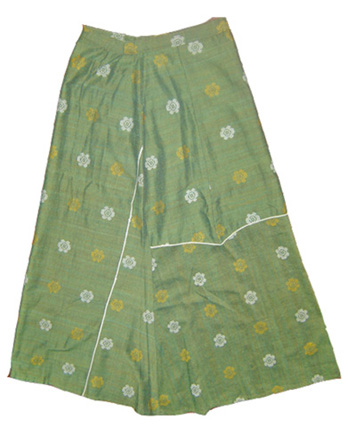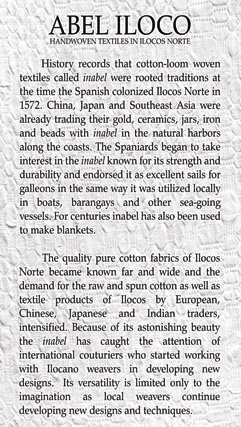Pandilíng
(October 15, 2012 to February 15, 2013)
A Survey of of Conical Skirts Found in Ilocos Norte
Ilocanos are conscious of putting on the proper outfit for every occasion. This is illustrated in the epic Lam-ang for when he goes to visit the Lady Cannoyan, he wears a complete attire of striped pull-on stringed trousers, decorated shirt and brocaded handkerchief. When Cannoyan entertains her suitor Lam-ang, she is urged by her mother to change her clothes to look more presentable. (Abel ti Amianan, Norma Respicio, July 17, 1999)
The traditional Ilocano dress made from inabel reflects the admirable qualities of the Ilocana – her aura of quiet beauty, appealing shyness, and dignity in her manners. She selected colors expressing her modesty and simplicity. Her typical dress came in a two-piece ensemble – blouse and skirt. The blouse called kimona is either plain white or pastel, usually with a cowl neckline. Her full-length skirt called PANDILING is cone-shaped with a drawstring around the waist. This is made from hand loom-woven textiles which she herself has meticulously woven and sewn by hand. The designs of the weave are inspired by things in nature such as diamonds, milkyway, shells and stripes or checkered. The dress is worn over a full slip called kamison. The Sunday dress is more elaborately designed. A colorful wrap-around called tapis is in colors which compliment the pandiling. The tsinelas are everyday footwear made of leather, while the formal footwear called kutso are made of beaded felt and leather which are worn on Sundays and fiestas.
The Pandiling Exhibit presents a survey of the different types of Pandiling found in Ilocos Norte. The collection dates back from the late 1800’s to the mid 1900’s.






